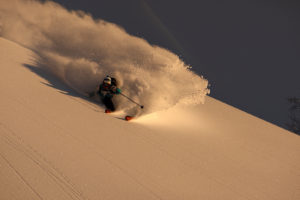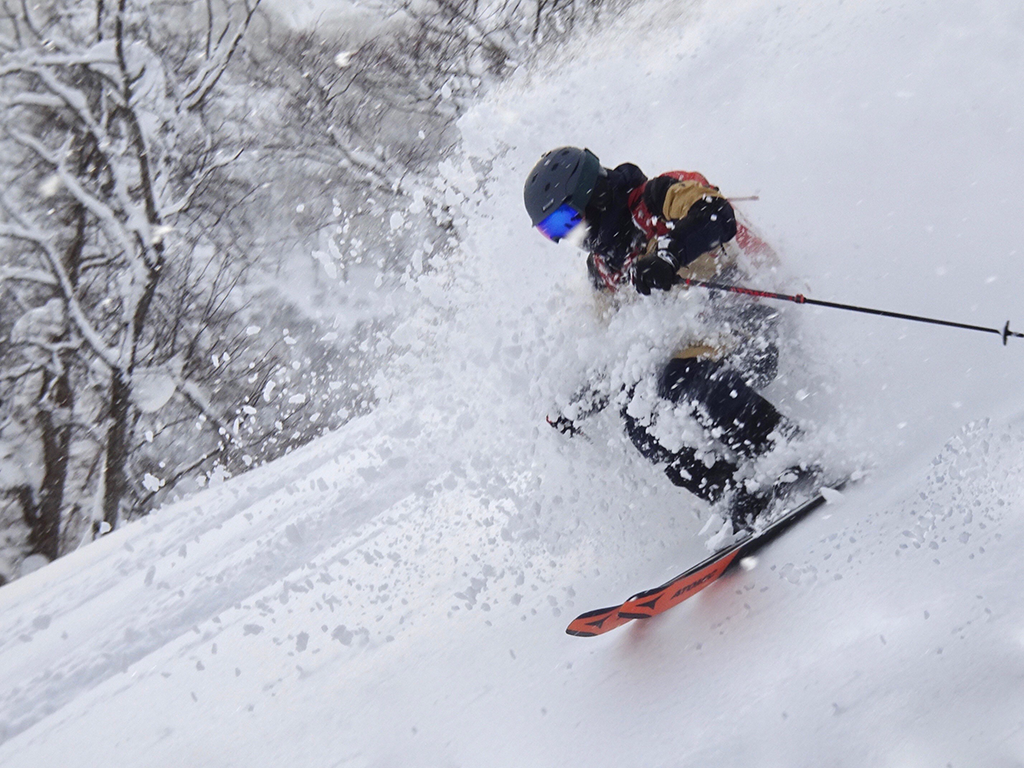Skier: Takeshi Kodama Photo: Kazuo Sudo
I want to enjoy more powder, so I want to go to the backcountry! "I can ski steep slopes and uncompacted snow courses without any difficulty." Takeshi Kodama, a professional skier who has skied various mountains around the world and also guides general users on gear selection at camps and exhibitions as an advisor, will teach you.
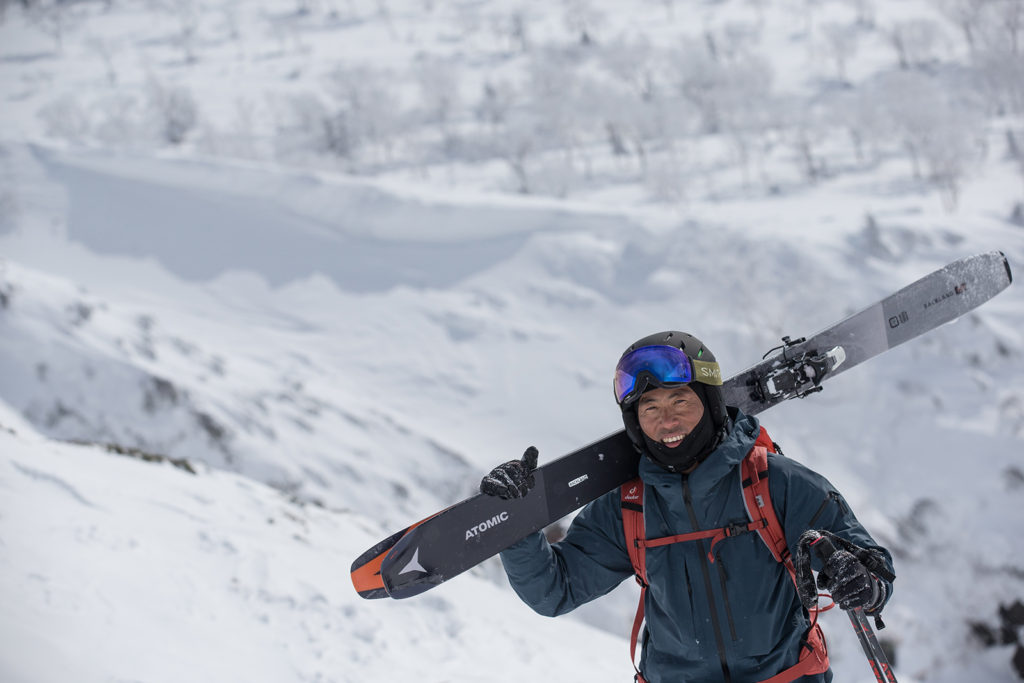
AdviserTakeshi
KODAMA
Born in Sapporo in 1974. He became a professional skier at the age of 19 after joining Yuichiro Miura & Snow Dolphins. He has extensive experience in downhill skiing from the summit of Denali and expeditions to the Northern Kuril Islands and Greenland. Climbed Everest in 2005. The 7th "Journey through the Earth" project with photographer Kei Sato
SKI
When recommending what kind of skis to someone who wants to start backcountry skiing, there are many things to consider, such as skill level, physical fitness, gender, and base ski area, but what is the first step? I will talk from the perspective of whether I should do it.
1. Center width about 100mm
For those who want to go out in the backcountry for the first time, we often recommend a top rocker fat ski with a center of about 100mm. Because it is easy to handle all snow conditions. I recognize that the 100mm is about the middle of the range, from tight and hard snow to very deep powder snow.
If it is thicker than 100mm, it becomes a ski that is good at deep snow. It's going to be a rocker to improve the operability in.
With a center width of about 100mm, the powder and the slopes are in just the right balance. As you continue backcountry, you will have two rods to cover the whole area, or three to cover the whole area. Carry one slim 90mm that can be used in early spring, and have another 107mm for powder skiing in the high season. In addition, there are people who have three thick ones for daily use of powder. However, at the very beginning, it is not possible to do everything, so if you hold down the center width of 100mm, you can slide evenly for the time being.
2. with a locker on top
In addition to the center width of about 100 mm, we recommend one with a top rocker. You can get buoyancy in deep snow, and even if the snow is soft and slippery, the rocker makes it easy to move the top, so it is easy to operate and you can slide easily. There is also a type that has rocker in both the top and tail (twin rocker), but if it is a hard bar, if the tail is greatly curved, the control performance will be slightly reduced, so in the backcountry where you ski on various snow conditions, the tail Lockers are more modest. If you start with skis that have rocker only on the top, I think you will be fine.
[Nose rocker + camber model]
A type of ski that has rocker in the nose. The nose rocker promotes buoyancy in powder, and the slightly straight tail creates a sense of stability in the latter half of the turn.

3. The material of the core material and contents
If the material of the core material and other reinforcing materials used in the ski changes, the ride quality will also change. I think there are preferences, but it's good to start with something that isn't solid. For example, a board with thick metal all over is stable, but it is chosen by the rider, so even if it is in, it is only partially, or it is made of a lightweight reinforcing material such as carbon, so the board is relatively light. The finished product is good. In the past, lighter skis tended to have less gliding performance, but now even lighter skis have better gliding performance. In the backcountry, you will have to walk, so skis that aren't too heavy are good to start with.
4. Anyway, I'm not good at deep snow! the person who
It's okay to enter with special skis for deep snow, but you need to be careful. When rocker skis first appeared, twin rocker skis such as ARMADA and DPS, which had a center width of about 115 mm, quickly gained popularity as skis that anyone could ski on powder snow. There are some people who got the chance to ski with such skis and became able to ski in powder, but there are areas that they are not good at, such as stability on hard slopes and seal climbs, and long traverses, so they prefer lift access. I think this ski is suitable for people who ski in powder.
5. Able to ski in any conditions
I dare to suggest an orthodox ski. It can ski in various conditions.
For example, specifically ATOMIC's "BACKLAND 100". Center width 100mm, lightweight top rocker. It's smooth, light, and skiable in all snow conditions. It's the perfect first choice for those who don't know what kind of skis to wear. Actually, it is my favorite model, but it is in very good condition!
Takeshi Kodama Used model
ATOMIC | BACKLAND 100

D=129.5-100-120mm (182cm)|L=164, 172, 180, 188cm|R=19.2m (180cm)|87,890 yen
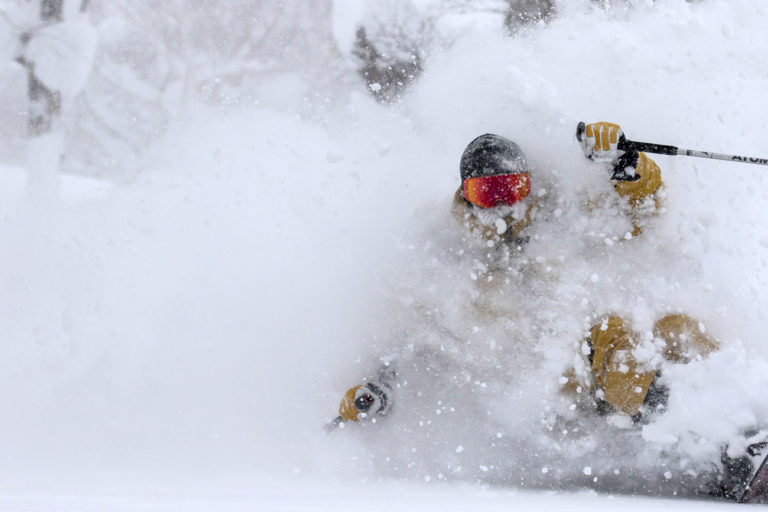
Models that meet the conditions proposed by Tsuyoshi Kodama
K2 | MINDBENDER 99Ti

D=138-99-123mm|L=170, 177, 184, 191cm|R=18.5m (184cm)|88,000 yen
Appropriate waist width that can be used for quick edge switching while providing good buoyancy in powder. Agile and stable all-mountain ski with the perfect combination of Titanal Y-Beam and all-terrain rocker.
HEAD|KORE 99

D = 134-99-120mm (177cm) | L = 170, 174, 182cm | R = 17.0m (177cm) | 93,500 yen
Equipped with a new material called graphene to achieve overwhelming lightness. The light weight increases buoyancy and makes the ski highly maneuverable. An all-round model that can handle multiple operations such as deep powder and ice burn with top rocker.
SALOMON | QST 98

D=133-98-121mmmm (183cm)|L=169, 176, 183, 189cm|R=17m (183cm)|93,500 yen
The C/FX, which is a mixture of carbon and hemp, is lightweight yet has a strong edge grip even on compacted snow and hard burns, enabling accurate and stable turns. An all-mountain ski with a top rocker that ensures high gliding performance even in powder.
DPS|Foundation100RP

D=1331-00-118mm (184cm)|L=153, 163, 171, 179, 184, 189cm|R=15m | ¥96,500
With a radius of 15m and a short effective edge, it has high maneuverability with easy pivoting and sliding, but is powerful and quick when carving. Center 100mm width suitable for all-mountain riding.
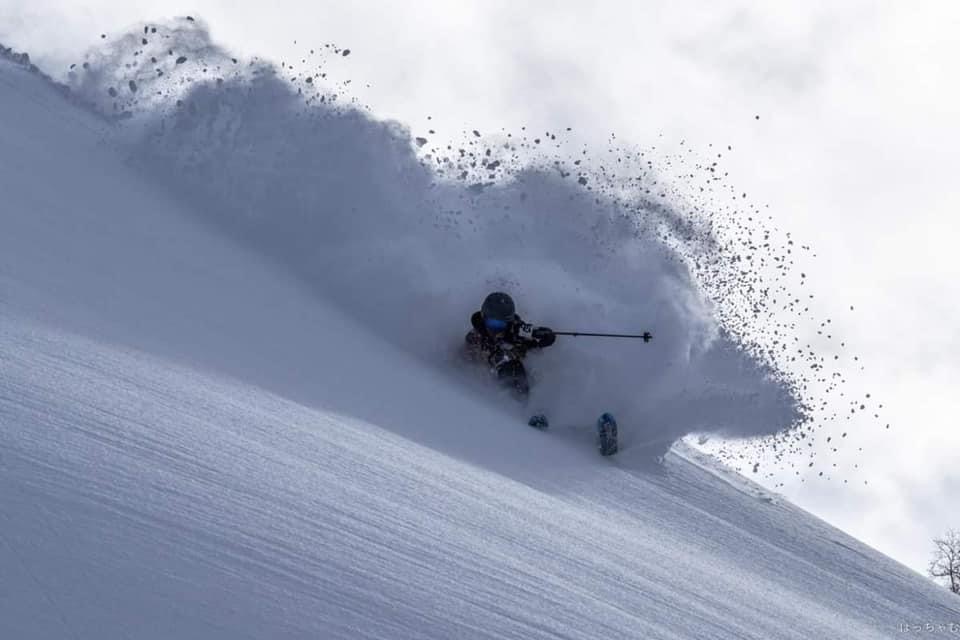
BOOTS |
Boots have come a long way in recent years. When backcountry skiing became popular, there were only two choices: climbing or skiing. Lightweight boots were not reliable for sliding, and boots that emphasized sliding were very heavy and lacked the function for walking. Recently, boots that have good gliding properties, are moderately light, and are equipped with walking functions have become mainstream.
1. 2-piece type or 3-piece type?
Each manufacturer produces boots that have the same shape as general ski boots with 4 buckles, high gliding performance, and a wide range of motion in the walk mode. It is a type called 2-piece, and is used by SALOMON, ATOMIC, TECNICA, etc. There are also 3-piece types such as DALBELLO and FT. Each has its advantages and features, and it depends on the user's way of thinking, so it's hard to say which one is better, but the 2-piece model makes it easier to hold the ankle and provide rigidity, so there are many models with a sense of stability. 3-piece shoes are easy to put on and have a flexible flex, so there are many models that are easy to move.
By the way, I wear 2 pieces. For those who have been wearing two-piece boots so far, I think it's easier to wear boots with similar shapes rather than completely changing the type.
2. flex
I think it's better to be able to use your ankles softly to some extent in the backcountry. I often ski on soft snow, and I need to move according to the terrain, so it's easier to slide with my ankles. Flex should be a little less.
For men at the expert level, the high-end models of each manufacturer are usually Flex130, and many people wear 130, but if it's your first time in the backcountry, I think you should start with Flex120. For women, the top is Flex 110 or 115, so I think you can drop one and start from around 100. I really want to go to the same hardness as Alpine, but I think it's okay to drop it a little at first.
3. walk mode
Climbing is also an important part of the backcountry. Naturally, it is better to have a walk mode for climbing. Walk mode reduces fatigue considerably. Some people say it's okay to put up with climbing for the sake of skiing, but I think it's more meaningful to be able to ski one more run by conserving your physical strength.
The range of motion is wide, about 70 degrees, but I think 50 degrees is not too much or too little. Most boots have a range of motion of about 50 degrees.
4. boot width
Width (last) is also a point when choosing boots. Every manufacturer is developing something slightly wider than the Alpine. There are 100mm on average, 102mm on the thick side, and 98mm on the thin side.
Each foot has its own shape, so it is essential that the shoe fits your foot, but one thing you should be careful about is the toe. In gliding mode, the ankle is fixed, so the position of the foot does not change, but in walk mode, the ankle is free, so the foot moves back and forth inside the boot. Isn't it moving about 5 mm? Then, when walking, the toe of the boot hits, and if you walk in that state for a long time, the toe part will hurt, and the nail will be damaged and turn black. So it's a heavy snow when you choose to have a margin of about 5 mm.
5. Thermoformed Shell & Inner Custom
Boots these days can be individually fitted by any manufacturer. ATOMIC, SALOMON, etc. can be thermoformed together with the shell. Some are partially heat-molded, and custom inner boots are often used. There are a lot of them, and each one has its merits, so it's a good idea to check them out before making your choice.
I use "ATOMIC HAWX ULTRA XTD130". It weighs about 1600g with 4 buckles that can slide firmly. The 4-buckle type is fairly light, but it is sufficiently rigid and the inner fit is solid. For men, I often recommend the slightly softer version of this model, around HAWX 120. SALOMON and TECNICA also have boots with a similar concept, so it might be a good idea to try them on at the store and compare them.
6. Do you want pin boots that support tech bindings?
Until now, tour bindings such as Maker's BARON and Duke, TECNICA's Adrenalin, and so-called tour bindings, which are step-in and go up with the plate, were the mainstream, but they have changed considerably. This is because in pursuit of lightness, pins are not only lighter in weight, but also easier to walk. The weight is not carried on the heel, so the foot is light. And it moves with the toes as the fulcrum, so it's close to normal walking.
If you want to start backcountry in earnest, I think you should buy PING boots from the beginning. If you think that it's okay to buy one after another, your options will become narrower, and you'll end up having to buy a new one at a higher cost.
Takeshi Kodama Model used
: ATOMIC| HAWX ULTRA XTD130
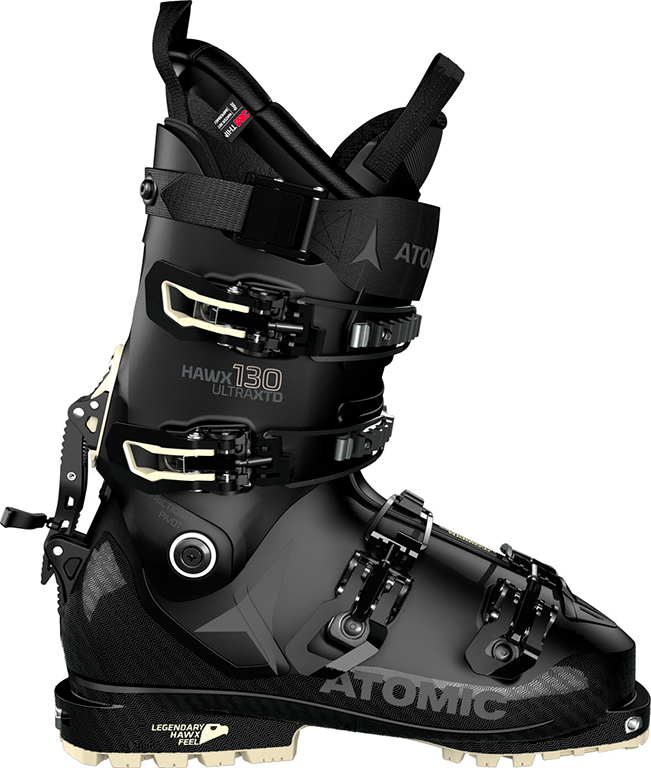
SIZE: 22/22.5–30/30.5cm
WEIGHT: 1668g (26-26.5cm)
FLEX: 130
PRICE: ¥
Lightweight freeride boots with walk mode. Equipped with a heat-molded inner shell that has a reputation for gliding performance, the model with a tech insert is marked with "CT". The HT has a Tech insert on the toe side only and is compatible with Shift bindings.
Models that meet the conditions proposed by Tsuyoshi Kodama
[2-piece structure]
ATOMIC| HAWX ULTRA XTD120
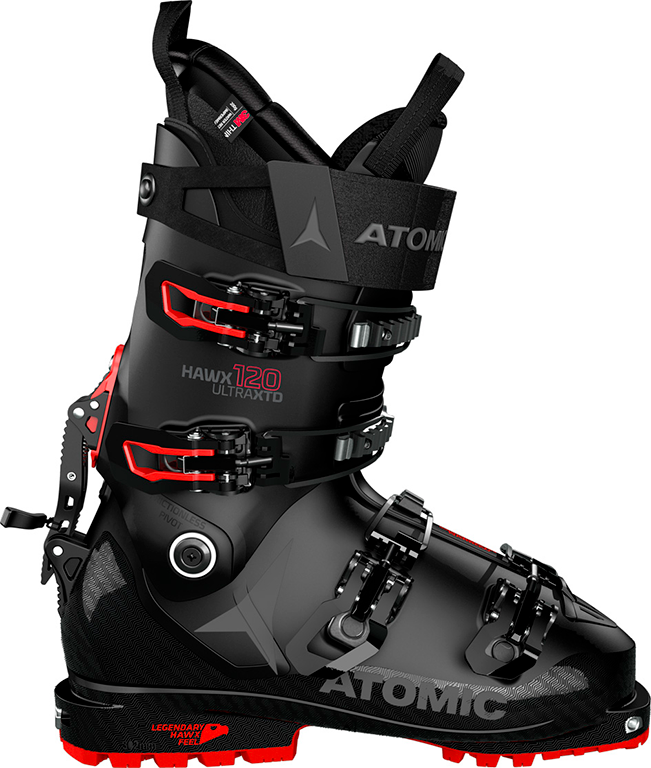
SIZE: 24.5-30.5cm
WEIGHT: 2092g(27.5)
FLEX: 120
PRICE: 88,000 yen
120 with one level lower flex than HAWX ULTRA XTD130. The ankle is more mobile. Lightweight freeride boot with walk mode. Equipped with a heat-molded inner shell that has a reputation for gliding performance, the model with a tech insert is marked with "CT".
TECNICA|COCHISE 120 DYN GW
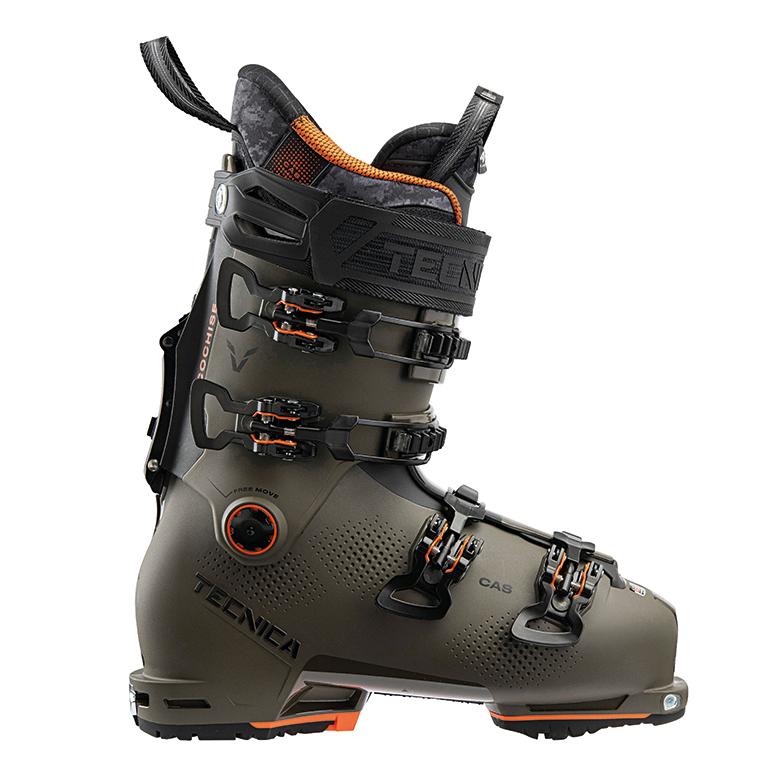
SIZE: 24-31cm
WEIGHT: 1750g (26.5)
FLEX: 120
PRICE: 82,500 yen
The popular COCHISE series at TECNICA. The fit and torsional rigidity are very good, and the grip on the snow surface at high speed is also solid. It is easy to get used to skiers who are used to wearing alpine boots.
NORDICA | STRIDER 120 DYN
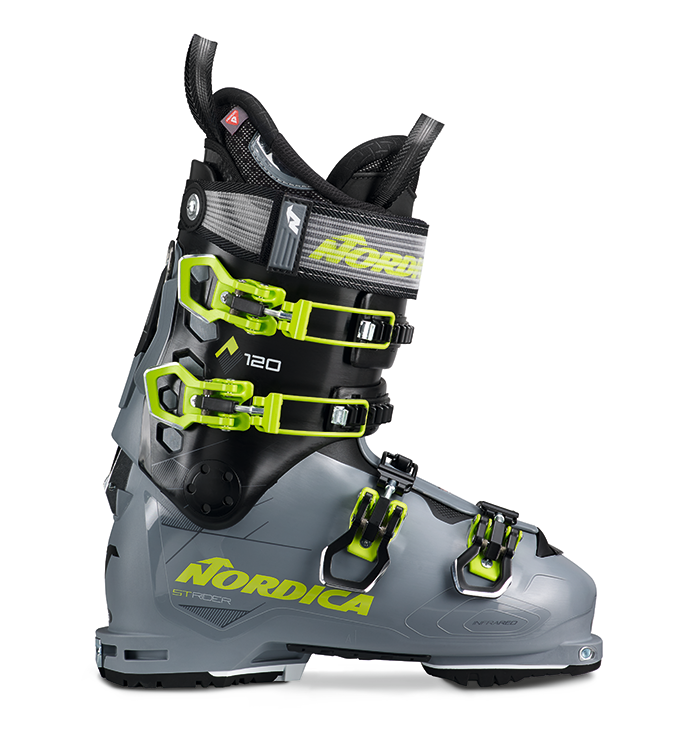
SIZE: 22.5-31cm
WEIGHT: 1890g (26.5)
FLEX: 120
PRICE: 86,900 yen
Feeling close to alpine boots with fast response. Since the side of the boot is well-composited, it gives a good impression to skiers who are experienced in competitive skiing or basic skiing.
[3-piece structure]
DALBELLO|LUPO AX 100
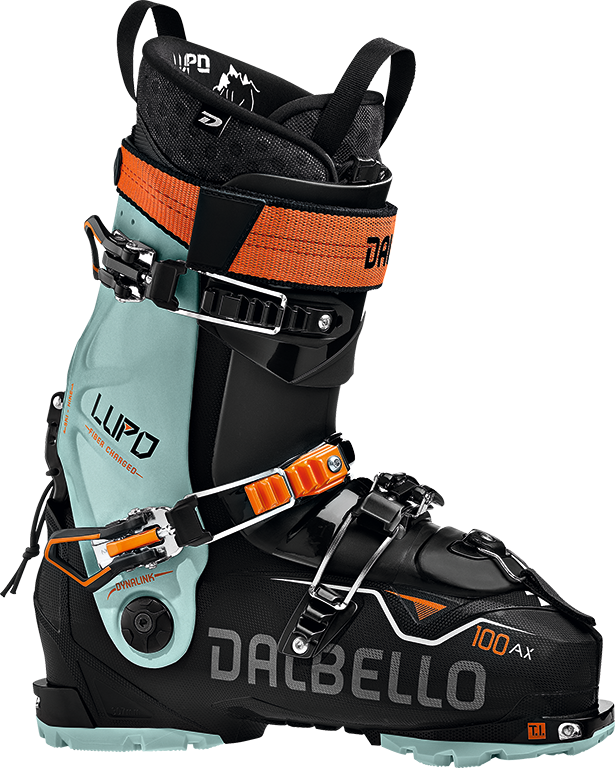
SIZE: 21.5-29.5cm
WEIGHT: 1621g
FLEX: 100
PRICE: 79,200 yen
Flex 100 which is most suitable for entry to backcountry with 3 piece structure. The size is from 21.5 cm, so it is OK for ladies.
FULLTILT|ASCENDANT SC
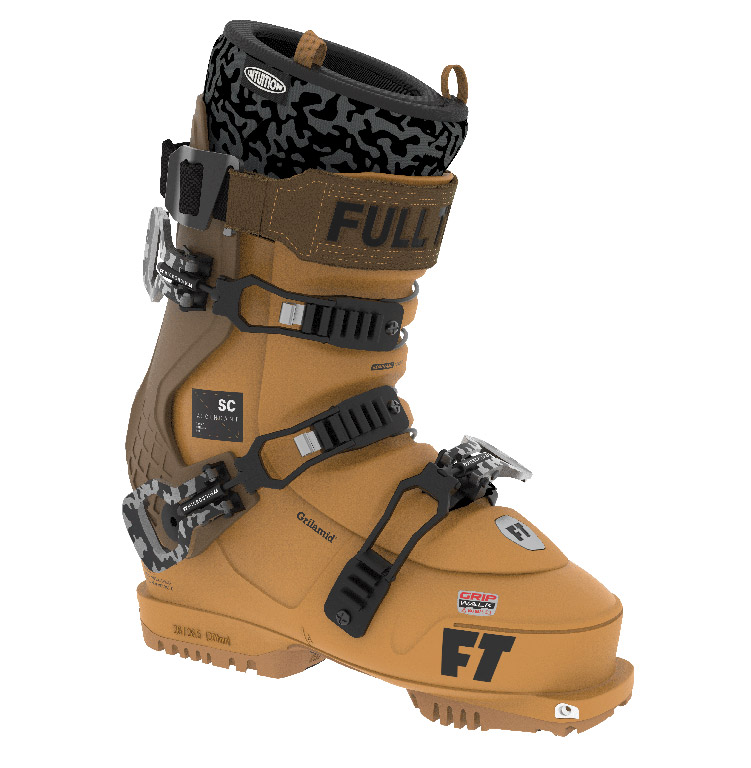
SIZE: 24.5-30.5cm
WEIGHT: 2092g(27.5)
FLEX: 120
PRICE: 88,000 yen
FT boots boasting a high fit with a 3-piece structure. It is said to be for backcountry with walk mode and tech binding, but it can be used in any situation, even park rides.
BINDINGS | Bindings
Until now, tour bindings such as Maker's BARON, DUKE, TYROLIA's ADRENALIN, and frame tour bindings were the mainstream, which were step-in and raised together with the plate, but the situation has changed considerably.
Because in pursuit of lightness, Tech binding not only makes the weight lighter, but also makes a difference in ease of walking. The weight is not carried on the heel, so the foot is light. And it moves with the toes as the fulcrum, so it's close to normal walking.
Tech bindings are almost mainstream now
Now, the type of binding is almost mainstream tech binding. Of course, some people still want to use the same alpine bindings they use on the slopes, but I would recommend pin bindings for ease of walking and lightness.
Five years ago, I wouldn't have been able to recommend "PING is definitely good". The reason why I can now say that with confidence is that until now, there were only very lightweight toe-piece and heel-piece pins that had been around for a long time. With this, although it was light, there was a slight drop in sliding performance, stability, strength, etc. So there were people I could recommend and people I couldn't.
The binding revolution brought by KINGPIN
It was Marker's KINGPIN that appeared there. The heel piece is stepped in and presses the heel from above, so the heel is stable and the skiing performance is brought out properly. KINGPIN came out and became the first binding revolution.
Around the same time, FRITSCHI released a model called TECTON. This also has a pin toe piece, but the heel is stepped in. This was a groundbreaking binding that climbed and slipped as well as the KINGPIN, and the toe piece also had a safety release function.
Advanced hybrid
Four years ago, SALMON and ATOMIC jointly developed SHIFT. At first glance, the toe piece and heel piece look like normal alpine bindings, but when the toe slides, it's a normal binding, and when climbing, the pin comes out when the lever is opened. rice field. The quality of the slide is not sacrificed at all, and the climb is light and easy to climb because it is a pin. Marker also released a new DUKE PT and has evolved further.
So we recommend
Now there are so many variations to choose from. The original pin type is not bad, but it is light and has great merit for long touring people. However, I think that it is rare for people who want to start backcountry to climb suddenly for 4 or 5 hours. Most people want to enjoy the side country first, and if they get the chance, they want to hike for an hour or two hours at the most. With that in mind, I feel that sliding performance is very important.
If you have three weekends to go skiing, one of those weekends will probably be backcountry. When it snows a lot, there are many people who want to ski the powder on the ski lift. With that in mind, I think it's safe to start by choosing something that has touring functions that are suitable for how you choose, after valuing the performance of the slide, instead of jumping on the lightness easily.
Marker KINGPIN, FRITSCHI TECTON, SALOMON, ATOMIC, and ARMADA shift bindings are very easy to use. I think that people who used normal alpine bindings will not feel uncomfortable and feel uneasy when they change to new bindings. Some people are worried about whether pins are really okay, but I think it's safe because there's no such thing. After using them for the first time, if you want to go on longer trips, your options will change when you buy them next time.
MARKER|KINGPIN 13

D=6-13|W=690g|93,500 yen
The originator of the innovative hybrid pintech binding with a heel piece of almost the same system as Alpine separate bindings. A heel piece with a built-in spring as strong as an alpine model realizes a heel hold and recovery function that you wouldn't expect from a pintech tour model. There is also "KINGPIN 10" with a release value of 10.

FRITCH | TECTON 12
DIN=5-12|W=630g|72,600 yen
A hybrid tech binding with a vise-type heel piece that presses down the top of the boot from the flitch, which is the only tech binding that has an independent release mechanism for the toe and heel. Carbon material is used for the toe piece and heel piece this season. In addition, by reviewing the shape of the parts, the rigidity and strength of the main body are increased.
SALOMON|S LAB SHIFT 13 MNC

DIN=6-13|W=885g|93,500 yen
An innovative tour binding that combines the advantages of both alpine bindings in gliding and tech bindings in hiking mode with a variable toe piece that quickly changes. Rather than a long tour that takes a long time to hike, we recommend going backcountry around the ski area using lifts and gondolas. Compatible with two ISO sole standards.
